by Heather Kent | Aug 9, 2021
 It’s hard to believe it is time for a new school year! The past couple of years have been unusual to say the least, but we have curated some of our top tips to help parents, grandparents and caregivers set their youth up for success. Check out the articles below to plan for a safe and stress-free return to school:
It’s hard to believe it is time for a new school year! The past couple of years have been unusual to say the least, but we have curated some of our top tips to help parents, grandparents and caregivers set their youth up for success. Check out the articles below to plan for a safe and stress-free return to school:
- Strategies for Back to School Savings– one of our most popular posts about teaching financial management and consumer skills while shopping for back to school
- Tips for a Successful School Year– a planning checklist to set your child up for success
- Preparing Your Child Emotionally for a New School– if your child is attending a new school this fall, this article will help you prepare him or her emotionally
- Out of the Box Lunch Ideas– Healthy but not boring lunch ideas for school (and work too)!
- Control those Germs Gathered at School- this post was written pre-pandemic, but the tips are especially relevant now!
- Setting up a Homework Center– A homework center can help young people stay focused and organized, and is not difficult to set up.
- Setting up a Home Communication Center– When kids start participating in sports, 4-H and other extracurricular activities, a home communication center can help streamline schedules and keep everyone on the same page.
- 4-H Opportunities at School– Many schools and afterschool care centers in Florida offer 4-H programming; check out this post for information about opportunities to extend your child’s 4-H experience!
by Claire Davis | Jul 5, 2021
 Summer is upon us and so is the heat in the Florida Panhandle. Schools are out and the kids are at home needing activities to do together. Homemade Freezer Pops are an excellent source of fun! These popsicles can be secretly healthy and taste absolutely delicious. They don’t have to just be for the kids either, adults of all shapes and sizes can enjoy them too. In this article we will discuss what freezer pops are, how to make them, and a few tips for maximum enjoyment!
Summer is upon us and so is the heat in the Florida Panhandle. Schools are out and the kids are at home needing activities to do together. Homemade Freezer Pops are an excellent source of fun! These popsicles can be secretly healthy and taste absolutely delicious. They don’t have to just be for the kids either, adults of all shapes and sizes can enjoy them too. In this article we will discuss what freezer pops are, how to make them, and a few tips for maximum enjoyment!
What are Freezer Pops?
A freezer pop is a frozen treat that generally comes in a clear, plastic tube. Freezer pops, not to be confused with popsicles which are typically consumed off a wooden popsicle stick, are found in grocery stores in unfrozen liquid form, ready for the consumer to pop them into their freezer at home! Once frozen solid, the consumer picks their flavor of choice, cuts open an end of the plastic tube, and simply squeezes or pushes the sweet ice out of the packaging.
Many of us know these sweet and fruity slushy pops as Otter Pops or Fla-Vor-Ice. These nostalgic treats are simply made from sweetened, colored, and flavored water. With little nutritional value coming from the store-bought version, homemade freezer pops can be much more nutritious. Keep following along to find out how to make these tasty treats!
How to make Homemade Freezer Pops
Freezer pops are super easy to make and are a healthier alternative to the nostalgic treat. Before you get started, you will need all the necessary supplies. Supplies commonly found at home would include a freezer and a blender. Supplies that can be bought at the store are Zipzicles (a freezer pop reusable plastic bag) or silicone ice pop molds, fruit of your choice, and a natural sweetener like honey.
Step 1: Wash your hands! Handwashing is one of the best ways to protect yourself and others from spreading germs. You should wash hands before, during, and after preparing your food. To wash your hands the right way, first wet your hands with warm, clean, running water. Then turn off the tap and apply your soap. Lather your hands (make lots of white foams/bubbles) by rubbing them together with the soap. Make sure you lather the back of your hands, between your fingers, under your nails, and palm of your hands. Scrub for about twenty seconds. (Don’t know how long 20 seconds is? Hum the “Happy Birthday” song from the beginning to the end twice!) Finally, rinse your hands well under warm, clean, running water and either dry with a clean towel or air dry. (1)
preparing your food. To wash your hands the right way, first wet your hands with warm, clean, running water. Then turn off the tap and apply your soap. Lather your hands (make lots of white foams/bubbles) by rubbing them together with the soap. Make sure you lather the back of your hands, between your fingers, under your nails, and palm of your hands. Scrub for about twenty seconds. (Don’t know how long 20 seconds is? Hum the “Happy Birthday” song from the beginning to the end twice!) Finally, rinse your hands well under warm, clean, running water and either dry with a clean towel or air dry. (1)
Step 2: Gather your ingredients to be blended. There are lots of fruits that make great homemade ice pops: watermelon, orange, pineapple, mango, raspberry, honeydew, cantaloupe, and strawberry! (3)
One of my favorite recipes for freezer pops uses 10 ounces of ripe berries, ~½ a cup of water, and 1-2 tablespoons of honey. If the fruit you use is very juicy, you may not have to use as much water but remember, the more water that you use, the icier the pop will become in the freezer. You can also use either lemon or lime juice to add a little flavor boost!. (3) The amount of sweetener needed varies as the sugar content of the berries can vary. If the berries are ripe and sweet, use a little less sweetener. If the berries are not as ripe, simply use a little more sweetener. Then blend all the ingredients together completely, until smooth!
Step 3: Fill individual baggies of your choosing. Make sure to not over fill the bags.
Step 4: Freeze the freezer pops for ~ 2 to 4 hours before enjoying. If you consume them around 2 hours, they may not be as solid as they will be at the 4-hour mark.
Step 5: Enjoy a refreshing treat!
Tips for Homemade Freezer Pops
- The sweetness of the chosen fruit will be muted once frozen. Make sure to use over ripe fruit or added sweetener to keep the treat sweet.
- Use a funnel to fill your freezer pop bags. Using a funnel will keep you from making too much of a mess, and will also help you mind the “maximum fill line” on the bag. If you keep the contents you are pouring into the bag under the line, it will be easier to seal! \
- Just about anything that can be blended or pureed can be used for a freezer pop! Leftover smoothies, various fruit juices, and even sodas make for easy treats! Check out the image below to see flavors others have created! (4)
For National Freezer Pop Day, July 8th, 2021, enjoy making homemade freezer pops with your family! With a snip of the scissors, you’ll produce smiles with every sip. (2)
by Claire Davis | Jun 22, 2021
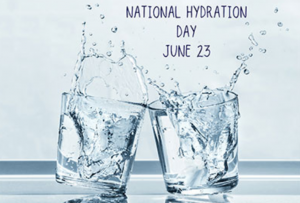 In the Panhandle of Florida, we are starting to get into the heat of the summer. With temperatures soaring, your sweat is going to start pouring. It is extremely important to replace the fluids lost through sweating. In this article we will cover what hydrated versus dehydrated means, why it is important, and tips on how to stay hydrated in the Florida heat.
In the Panhandle of Florida, we are starting to get into the heat of the summer. With temperatures soaring, your sweat is going to start pouring. It is extremely important to replace the fluids lost through sweating. In this article we will cover what hydrated versus dehydrated means, why it is important, and tips on how to stay hydrated in the Florida heat.
What is Hydration, and Why Does it Matter?
Hydration is the process of introducing our body to additional fluid (i.e. water). Dehydration is when you have used or lost more fluid that you are taking in. Your body is unable to continue functioning properly without fluids. Staying hydrated may seem like a difficult task, but it is extremely important for us to stay hydrated for optimal health and performance throughout the day. “Drinking enough water each day is crucial for many reasons: to regulate body temperature, keep joints lubricated, prevent infections, deliver nutrients to cells, and keep organs functioning properly. Being well hydrated also improves sleep quality, cognition, and mood.” (1) Without staying hydrated, we can seriously harm ourselves. Whether you are considered youth or an adult, you can still lose approximately 40 percent (2) of your body’s water during hard work or exercise.
How to Stay Hydrated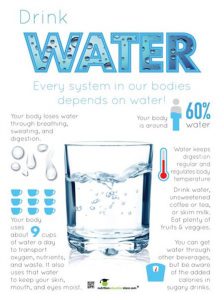
- Drink lots of fluids: Don’t wait till you are or feel thirsty to drink. By the time that you feel this, you are already slightly dehydrated. It is important to drink fluids, preferably water, throughout the day. During the summer, while it is hot, it should be a top priority to replenish fluids lost in our body. A good way to start the day is by drinking a glass of water when you wake up and get your body going. Fluids are fluids, but some fluids are better for us than others. When replenishing the fluids that we have lost through sweating, make sure that it is mainly from water. Some of the fluids can also be from flavored water, tea, or coffee. Try not to consume as many sugar-sweetened beverages, as many of them act as a diuretic. The sugar found in these drinks tends to draw the water out of your cells, making you feel thirsty a short time after drinking it. The sugar drawing the water out of cells will also make you need to urinate more quickly, therefore losing even more fluid. Something “punny” for this National Hydration Day: No matter how much soda I drink, I’m still so thirsty… I must be “soda-hydrated!”
- Eat Fuel Foods: Make sure that you are fueling body with the appropriate foods. Certain fruits and vegetables contain a large amount of water. Examples of water-rich fruits are: watermelon (its in the name!), strawberries, peaches, and pineapples. Some examples of vegetables with a high water content are: Cucumbers, leafy green (i.e. lettuce), celery, and tomatoes. Foods that are highly processed tend to be dehydrated and have lots of sugar or salt, which dehydrates you more.
- Look at the Weather: Stay inside when it gets too hot outside and when it is extremely humid. The sun is at its peak between 10 am and 2 pm every day, meaning that that is when it will be hottest outside. Plan necessary outdoor activities for the early morning or later in the evening. The higher the humidity, the more you are going to sweat.
- How to Dress: Make sure that you dress for the weather, appropriately. Loose fitting clothing allows your skin to breathe, keeping your body cooler. Lighter shades do not absorb the heat like dark colors. Wear a wide brimmed hat to keep your head cool. Also, use plenty of sunscreen. Getting sunburned is not just uncomfortable, it can also increase your skins’ temperature, making it hard to stay cool.
Signs of Dehydration: Be aware of the signs of dehydration. As stated in number one, do not wait for the signs of dehydration to begin drinking fluids. Some of the signs of dehydration include but are not limited to: dark or smelly urine, vomiting, bad breath, dry mouth, irritability, confusion, and fatigue. If you are dehydrated or have lost a lot of fluid through sweating, vomiting, or diarrhea please seek medical attention.
Some Tips for Staying Hydrated
I have a hard time getting myself to drink plenty of fluids, so below are a few tips that I try to follow to keep myself properly hydrated.
- Keep a bottle or glass of water by your bed. While you are sleeping, your body is not receiving any fluids, so it is becoming slightly dehydrated. Having water close by the bed means you do not have to get up and disrupt your sleep.
- Purchase a reusable water bottle. If you have a reusable glass or metal water bottle, you can keep it with you all the time. If you have easy access to water, you are more likely to drink it.
- Flavor your water. Plain water can become boring if you drink it all the time. Flavor your water with some fresh fruit or a flavoring packet.
- Try to drink at least 8 glasses of “good” fluids every day. Water is extremely good for you, but you can also consume clear broth, tea, coffee, or sports drinks. This will help prevent water from becoming boring. Just make sure that you limit the intake of caffeine and alcohol.
- Check the color of your urine. Believe it or not, this can be an good indicator as to whether you are hydrated or not. The paler, or more clear, your urine is, the more hydrated you are. If the urine you pass is darker, yellow or even orange, you are more than likely dehydrated.
- Download an app. There are apps on our phones for everything now-a-days. There are apps that can send you notifications to drink more water. Some of these apps are also capable of recording how much you drink.
Staying hydrated is extremely important, especially now that we are facing the “dog-days” of summer. Drink lots of fluids, but do not wait till you feel thirsty. The more that you sweat, the more fluids you need to take in. Download this hydration tip sheet to remember to stay hydrated!
Sources:
by Ronnie Cowan | Jun 17, 2021
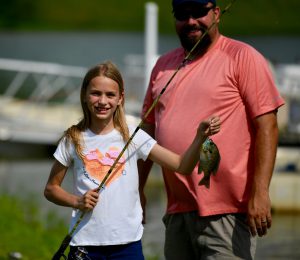 If you need a good reason to go fishing, we’ve got you! Today is National Take a Kid Fishing Day, and we can’t think of a better reason to promote our 4-H fishing project. Our 4-H fishing project connects youth to the great outdoors and is an opportunity for youth to learn about:
If you need a good reason to go fishing, we’ve got you! Today is National Take a Kid Fishing Day, and we can’t think of a better reason to promote our 4-H fishing project. Our 4-H fishing project connects youth to the great outdoors and is an opportunity for youth to learn about:
- Important angling skills, like casting and retrieving your line.
- Different types of tackle and how they are used to catch fish.
- How to take proper care of your rod and reel.
- Cleaning and cooking your fish.
- Ecology of aquatic and marine environments.
- How to identify the different types of sportfish and how to catch them.
- What it means to be a responsible angler.
Youth also learn about careers related to fisheries and wildlife, and their importance to the Florida economy. Florida is often called the fishing capitol of the world because the state holds more record fish catches than any other state or country! Fishing is important for many different reasons. Recreational fishing is a major economical driver in the state of Florida. The sunshine state has approximately 4 million anglers that contribute $13.8 billion to Florida’s economy supporting over 120,000 local jobs.
If you have a passion for fishing and the environment, please consider sharing your skills and knowledge with youth. 4-H can customize volunteer roles to fit your interest and
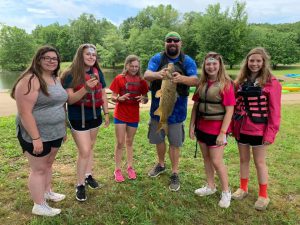
Group of 4-H youth, volunteers, and agent enjoying the wonders of the outdoors
schedule so you can inspire the next generation of anglers. Contact your local UF IFAS Extension office to discuss how you can contribute to “making the best better” in your community.
If your child or grandchild is interested in participating in our fishing program, check out our Sports Fishing Project page, or reach out to your local 4-H agent. The University of Florida school of Forestry, Fisheries, and Geomatic Sciences sponsors a program called “Fishing for Success.” This program includes several family fishing days where they provide everything you need to fish and have fun!
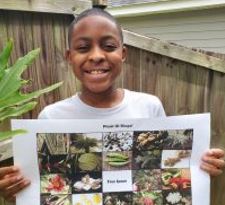
by Marcus Boston Jr. | Jul 31, 2020
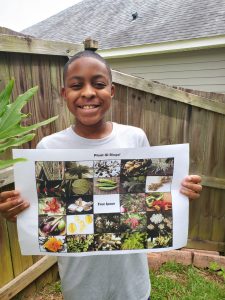
4-H Virtual Plant Science Camp Bingo Game
July 6th of this year was supposed to be the first day of our 4-H Wildlife and Outdoor Recreation Day Camp with Leon and Jefferson Counties participating. Due to the pandemic, all of our Florida 4-H face to face camps were cancelled this summer due to safety concerns for the students and the instructors.
In spite of everything that has taken place since March of this year, there is still some good news! Even though we are in the middle of a pandemic, there is an outdoor classroom in YOUR backyard that has plenty of room for young people and parents to explore. While most youth have spent more time than they probably want to with their families confined, within the four walls of their home, there is no time like the present to explore wildlife and gardening opportunities that await just outside the door. Youth that spend time outside exploring the great outdoors have the unique opportunity to stimulate their senses while engaging in “hands on” educational activities without even knowing it.
4-H provides countless opportunities for youth to gain a better understanding of how all organisms are interrelated and how they can become environmental stewards at home, school, and in the communities in which they live. What are some of the benefits of converting backyards to outdoor classrooms?
I’m glad you asked…here are just a few!
1. Healthy lifestyles are encouraged –

Youth planting an orange tree after participating in Virtual Plant Science Camp
Active time spent outside may help address some of the health issues we are seeing in children today such as obesity, attention deficit disorders, and depression.
2. Nature deficit disorder decline –
Exposing students to nature and allowing them to learn and play outside has shown to foster sensitivity, appreciation, and respect for the environment. It combats “nature deficit disorder” …and it can be a lot of FUN!
3. Critical-thinking skills enhanced –
Exploring what is in the backyard and starting a garden provides opportunities for experiential learning outside of the classroom and enables students to make connections that can be applied to the real world.
4. Responsible action is taken to better the environment –
By exploring outdoors either by planting or just observing nature, youth begin to understand how their decisions and actions affect the environment. It is from this point they can begin to obtain the skills necessary to address complex environmental issues as well as ways we can take action to keep our environment healthy and sustainable for the future.
So even though we are in the midst of a pandemic, there may be opportunities to make lemonade out of the COVID-19 lemons we find ourselves in by unmasking the opportunities that await in our backyards!
For more information about 4-H in your county, find your local UF/IFAS Extension office or visit http://florida4h.org.
*“Please note some pictures were taken prior to our challenges with Covid-19 and we remind people to social distance and wear a mask for the personal safety of self and others.”
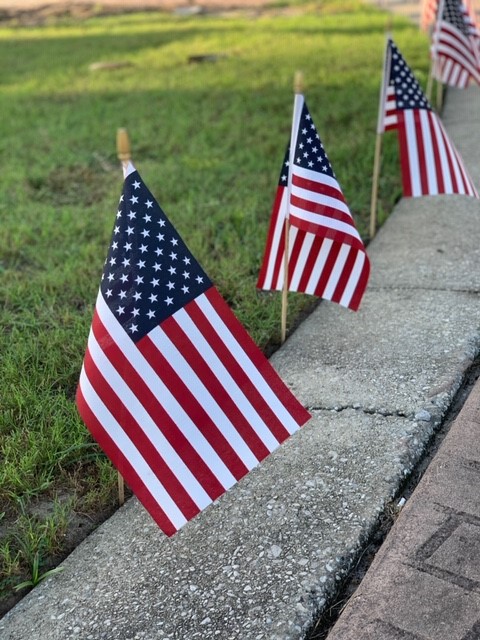
by pmdavis | Jul 3, 2020
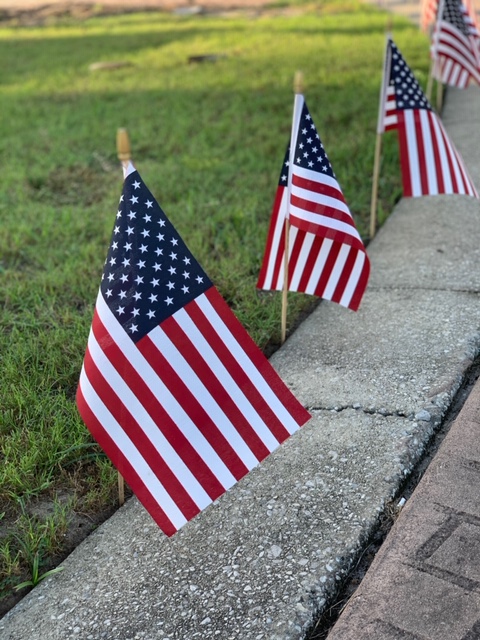
Celebrate our Freedom
The boom of fireworks, an outdoor concert, a lively parade, the smell of hot dogs on the grill, sweet cold watermelon slices, and a day spent with friends and family, for many, this is what the Fourth of July means. We get so busy enjoying the celebration that we often forget to stop and reflect what the holiday is about.
The Fourth of July is a celebration of independence from British rule and the formation of America. The holiday has been celebrated since 1776 and became an official federal holiday in 1870. The succession from British rule and creation of the Declaration of Independence would not be possible without the formation of a military. In the United States, we are fortunate to still enjoy the freedoms awarded though the Revolutionary War (and military) and work of the Continental Congress. These Founding Fathers of the U.S. paved the way for independence, but our dedicated service members and their families work every day to ensure that our freedom and independence continues. No one loves their country more than a Soldier, Airman, Marine, Coast Guardsman or Sailor; they are willing to sacrifice all to protect and preserve our freedom. They are passionate about their mission and give all they can to serve the U.S. and her citizens.
In a discussion of what Independence Day means to military members, SSgt. Quade, USMC (Vet), states “Military wide, Independence Day is one of the most quintessential days of the year. Not only because of the signing of the Declaration of Independence, but that signature represents the freedoms and liberties that were fought for by all brothers and sisters of all branches and earned through blood, sweat, and tears.” It was interesting to hear his perspective and learn that Independence Day is celebrated all over the world by U.S. Military members – maybe not always with fireworks, but a group picnic-style lunch with hotdogs and hamburgers.
We also have to recognize the many sacrifices made by the military members that affect their family, such as missed birthdays, holidays, family functions, and milestones. What makes the time away tolerable is knowing that back home the active duty spouse is stepping up to the plate and taking care of the family. Children assume different roles within the family to help keep the household running and provide support. Military families are resilient and fluid, adjusting to relocation and changes in family dynamics.
This year, as you celebrate the Fourth of July, I hope you enjoy fireworks, grilled hot dogs, and a cold slice of watermelon. During your celebration, I encourage you to take a moment and thank military members and their families, many who are 4-H members, for their efforts and sacrifices in protecting our freedoms so we can enjoy independence every day.
UF/IFAS Extension and 4-H are proud to be a part of the military family – 4-H works with military youth centers across the nation and overseas to create some consistency for youth in these situations. For more information about the 4-H opportunities available in your county, please contact your local UF IFAS County Extension Office, or visit http://florida4h.org.
Special thanks to Jennifer Sims, 4-H Military Partnership Coordinator, UF/IFAS Bay County, for providing this article and picture.
 It’s hard to believe it is time for a new school year! The past couple of years have been unusual to say the least, but we have curated some of our top tips to help parents, grandparents and caregivers set their youth up for success. Check out the articles below to plan for a safe and stress-free return to school:
It’s hard to believe it is time for a new school year! The past couple of years have been unusual to say the least, but we have curated some of our top tips to help parents, grandparents and caregivers set their youth up for success. Check out the articles below to plan for a safe and stress-free return to school:


 I
I






